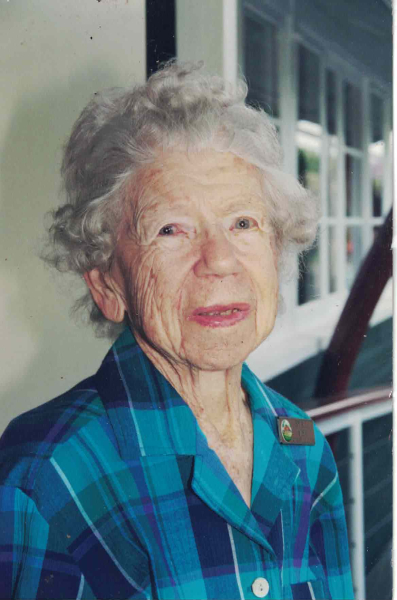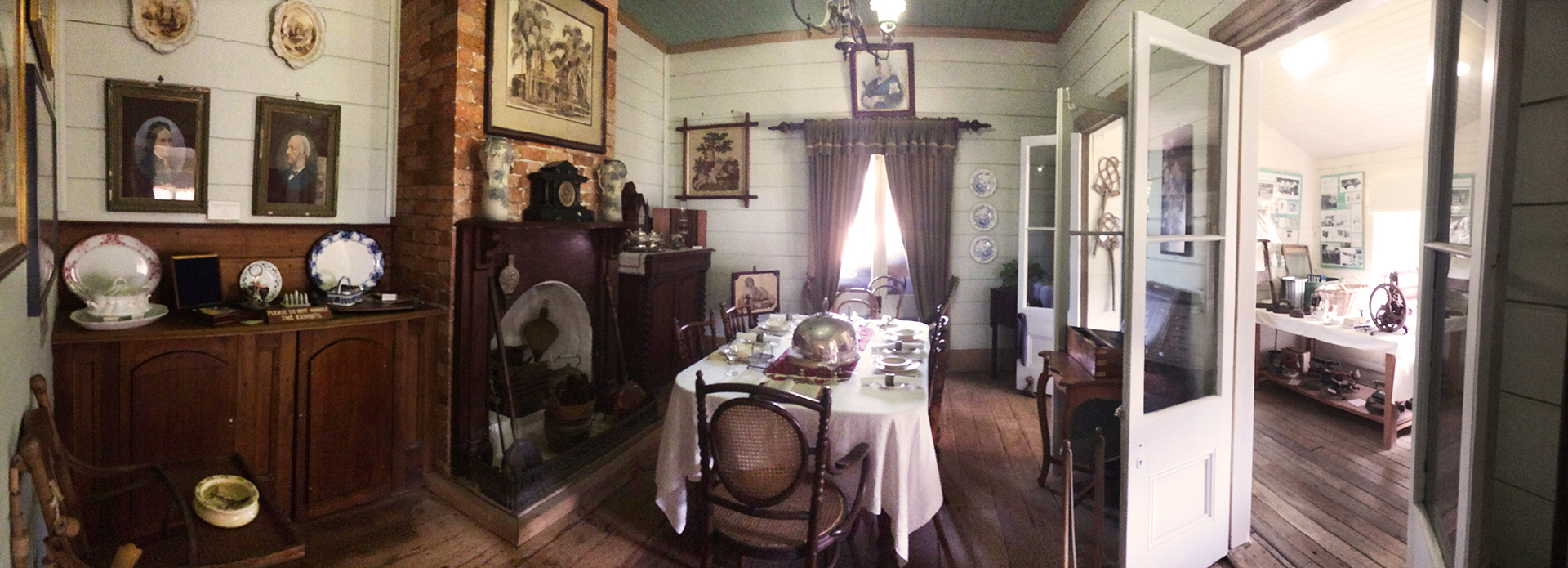History
The Buderim Historical Society (BHS), was formed in response to a request from the Buderim War Memorial Community Centre (BWMCC) to run the Pioneer Cottage as a Heritage Museum. The BWMCC became an incorporated organisation in the 1985 named the Buderim War Memorial Community Association (BWMCA) and currently oversees the operation of BHS, the Information Centre at the Buderim Old Post Office, and the Buderim War Memorial Hall
The Objects of the Society were
• to stimulate interest in the history of Buderim and to collect and collate information and material relating to local history,
• to establish and maintain a museum of objects of historical interest in the “Pioneer Cottage” Buderim, for the benefit of local residents and visitors,
• to engage in other activities or projects as the Society may decide as being within the scope of its members, and
• to co-operate with or affiliate with any other organisation with similar objects to those of the Society if considered desirable.
A Public Meeting was held on 4th March 1966 and the Buderim Historical Society was formed. Many local clubs and volunteers spent many hours repairing the cottage and at a function on 8th October I966 Sybil Vise officially handed over the deeds of the cottage to the BWMCA. A year later the cottage was officially opened to the public following donation of many artefacts for display. The Official Opening Ceremony was held on 23rd September 1967 by the Premier, the Hon G F R Nicklin. M.M. MLA.
Pioneer Cottage was listed on the register of the Queensland National Trust and the National Heritage in 1982. In 1984 a start was made to catalogue the contents of Pioneer Cottage and this continues today. The Buderim Historical Society became incorporated in 1990. In 20l5 celebrations were held to recognise 50 years of wonderful work by the BHS and the fact that the cottage had been open to the public for almost 50 years and mostly on six days per week.
Click below to see
Buderim Timeline
The Burnett Family
John Burnett and his wife, Jane, came to Brisbane from Somerset, England in 1866, accompanied by their nine sons and one daughter and Ann North who sailed with them to help with the children. In 1867 John Kerle, the eldest son, married Ann North. They farmed at Burpengary until 1876 when John Kerle, moved to Buderim. Five other Burnett sons followed him in the 1870s and 1880s.
John Kerle worked at the new sugar mill recently built by Joseph Dixon and John Fielding on Mill Road and also leased land on which he grew sugar cane. Soon after his arrival on Buderim in 1876 he was followed by his wife Ann and four children. The family initially rented Tom Ridley’s house near the present Box Street, one of the first houses built on Buderim. In 1878 they acquired land between Ballinger Road and the current site of the Tavern. Needing accommodation for his growing family, he built a house there in 1882 with the help of carpenter Harry Board.
Today this house is Buderim’s museum, known as ‘Pioneer Cottage’. It stands on a small block in Ballinger Crescent surrounded by suburbia. It was very different in 1878 when John Kerle Burnett and his wife Ann purchased 20 acres of forest land on this site. At that time there were fewer than twenty houses on Buderim and with only three or four in the central part of the town and no shops.
The house was typical of bush design and construction from the latter half of the nineteenth century. It was a simple four-roomed house with a central corridor and a wide veranda on all sides. It was built with local timber – some from Burnett’s own block – which was pit-sawn into planks on the site. The hardwood bearers were made from local tallow wood. The walls, floors and ceilings were planks of white beech with red cedar doors and joinery.
The house would have looked much as we see it today except that it initially had an open veranda on all sides and a roof made of tallow wood shingles. Due to the risk of fire, there was a detached kitchen and family room at the rear of the building and a baker’s oven. There were also stables and a barn, all now long gone. As the family increased, two bedrooms were built in the attic area.
In 1889, after the Buderim sugar mills closed, J.K. Burnett opened a store near the corner of Ballinger Road and Main Street. It was a low set building with a hipped roof and a veranda opening on to the street. For almost a quarter of a century it was Buderim’s only store. J.K. sold various items including groceries, bread and drapery. Most supplies came from Woombye as back loading on the farm produce wagons, although some of the bread was probably baked in the brick oven behind J.K. Burnett’s house. The store was also the Post Office, with the mail coming three times a week from Woombye and was an agency for the United Insurance Company. In 1914 J.K. closed the store due to his advancing years and also due to competition from other stores. For a time this store was then used as accommodation for the workers on the Palmwoods-Buderim Tramways.
Sybil Vise

Sybil was born at Chinchilla in 1905 and in 1907 the family moved to Mons where Muriel and Arthur were born. Due largely to the efforts of her father, a school was opened at Mons when Sybil was 11 years old and she was the first student to enrol. Prior to that she had been educated at home. This early home education did not prove to be a problem as Sybil obtained a scholarship to St Margaret’s School at Albion, Brisbane as a boarder. At the age of 18 she matriculated as Dux of the School. She then spent two years helping on the farm until she obtained a position as a teacher at the Scottville Primary School with a yearly salary of £120. She continued her studies by correspondence and in 1930 was awarded a Bachelor of Arts degree by Queensland University. In 1938 she was one of only two female graduates to be awarded a Diploma of Education.
She continued her teaching career working at several schools including Stanthorpe and Cairns. In 1945 she was appointed to the staff of Nambour High School where she remained until 1965, then after a brief period at Southport, she worked in Brisbane at the Secondary Correspondence School. She retired in 1971. In 1933 she joined the Australian Federation of University Women and was an active member for 60 years. She was a world traveller attending conferences in places as diverse as Scotland, Switzerland, China and Japan. With this background she must have found it frustrating trying to install a love of Shakespeare into high-spirited country children at Nambour. Former students from her class remember her as a small lady who knew her subject well, but who had some problems controlling a class of boisterous teenage boys. She taught English, Geography and History.
In 1952 Sybil purchased a house in Pioneer Crescent, Buderim for £545 with a deposit of £100. This house had been built by John Kerle Burnett in 1882. Initially she intended to repair it and eventually live there. In the meantime she rented it for £1 a week. By 1965 the building had deteriorated and was in poor condition. At this time Sybil realised that a decision needed to be made about the future of the building. At the same time a local resident, Zelma Dyson, realised the historical value of the building and approached Sybil and local Shire Councillor and real estate agent Merv McLuskie who was able to report that the building was basically sound. He negotiated with Sybil who was well aware of the history of the house and she agreed to donate the building to the community via the Buderim War Memorial Community Centre. In return she asked that she be permitted to build a small cottage on the block in which she could live during her retirement. These conditions were approved and the BWMCC set up the Buderim Historical Society to look after the building which was to be known as Pioneer Cottage and operated as a museum.
Sybil Vise was the first Patron of the BHS. She built her small home next to Pioneer Cottage and it became known as ‘Vise House’. Realising the need for both buildings to be under the one umbrella and being aware that Vise House would be indispensible to BHS as an administrative and storage facility, she made arrangements for it to be bequeathed to BWMCC. As well as these very important gifts to the community, she also made several cash donations to help with the renovation of Pioneer Cottage.
Sybil Vise was clearly a woman ahead of her time. She was at the forefront of academically trained women of fierce independent spirit and she should be remembered for these accomplishments. But without doubt her lasting memorial is Pioneer Cottage which she so kindly and unselfishly gave to the Buderim community. Her generous gift has fostered a public interest in Buderim’s history which has lasted half a century. She died just one month short of her 95th birthday on the 7th July, 2000. Her ashes rest in the memorial gardens at St Marks Anglican Church, Buderim alongside her parents, Ambrose and Bessie Vise.
Garden

Banksia spinulosa hairpin banksia or honeysuckle banksia. TheGubbi Gubbi word for this species sounded like ‘Badderam’ to explorer Tom Petrie and from this came the name ‘Buderim’ as we know it today.
The Garden at Pioneer Cottage has evolved from the house surrounded by Cocos and Piccabeen palms seen in the early photographs and paintings. Since 2001 the palms have been removed with the Garden now reflecting a recognised cottage garden of older style plants and some special plantings to commemorate significant contributions of individual volunteers and events such as the Buderim 150th Celebration and the ANZAC Centenary.
Volunteer gardeners tend the garden regularly and plan plantings and prunings making the Garden the lovely display it is today.

